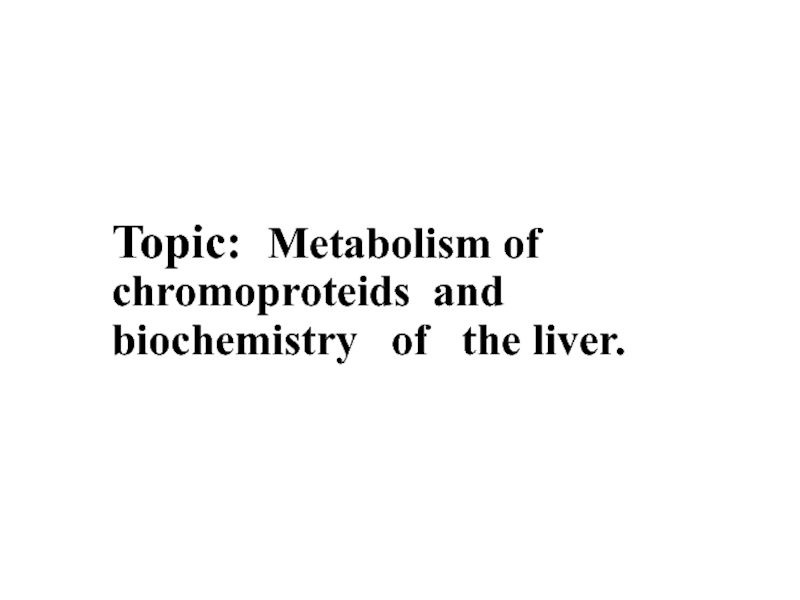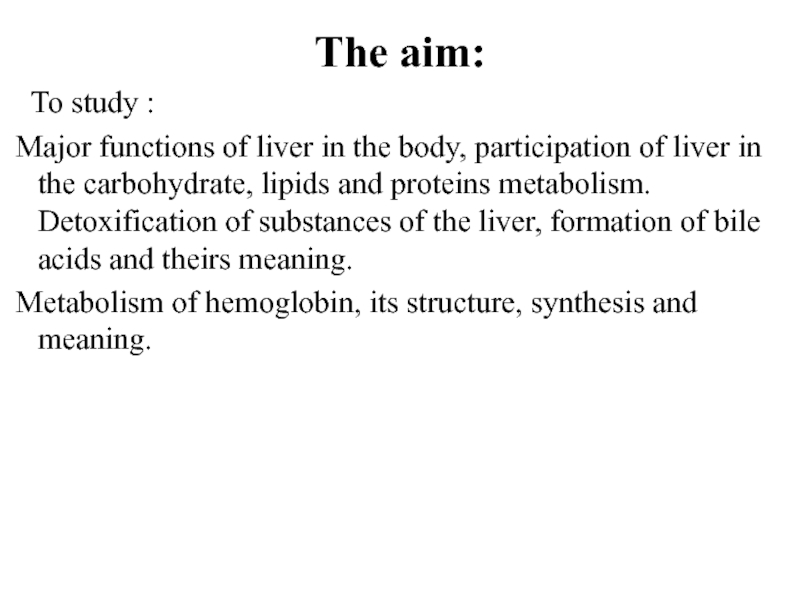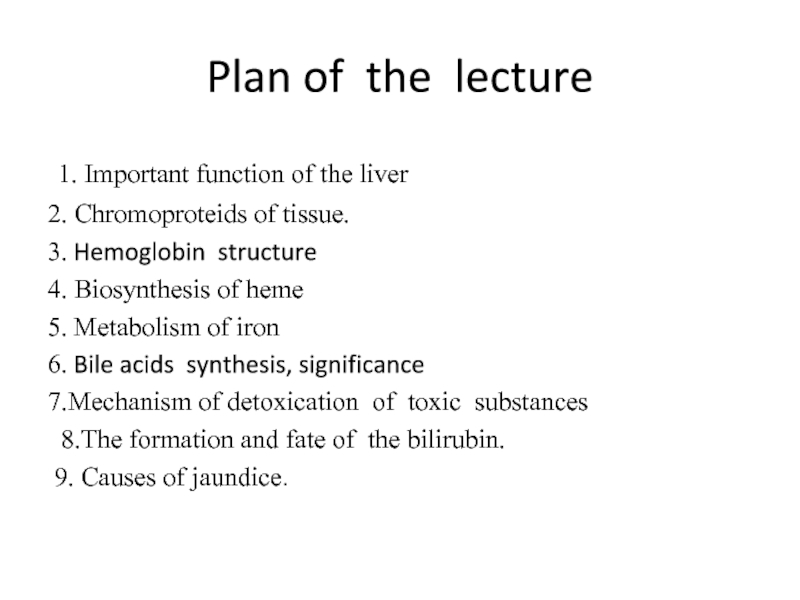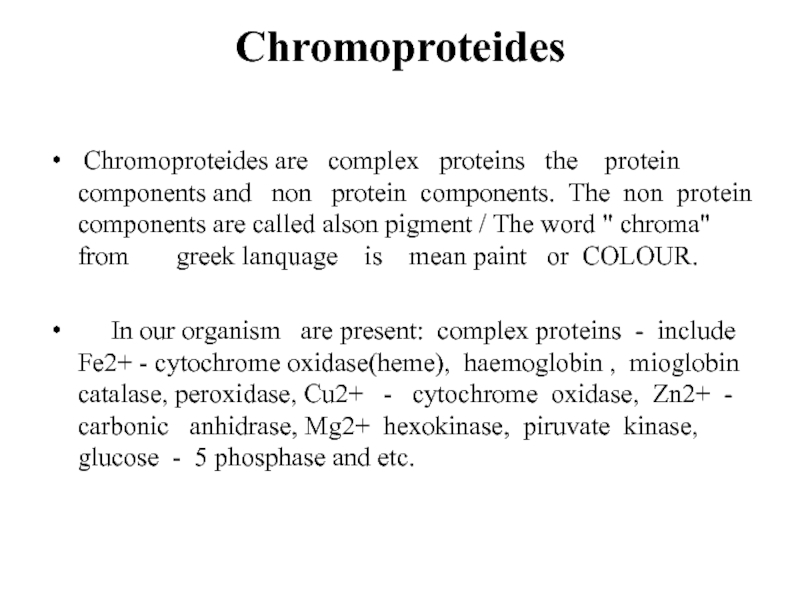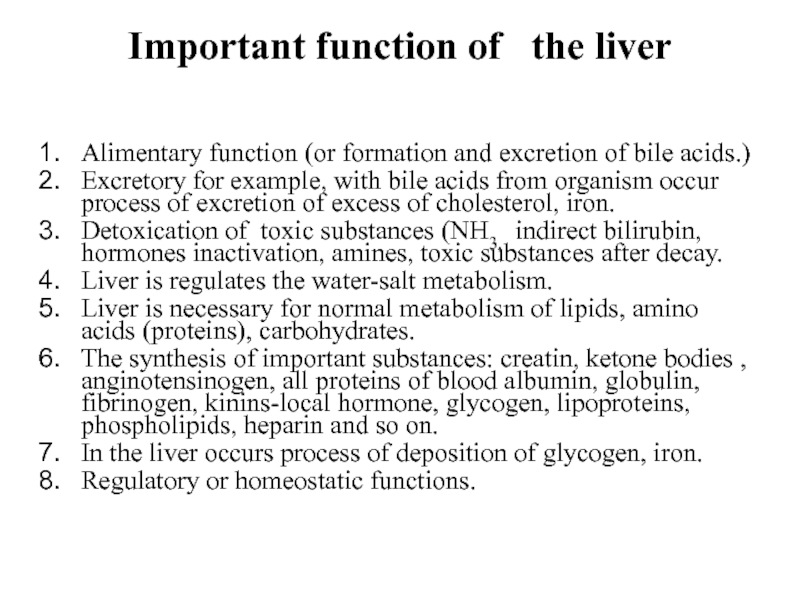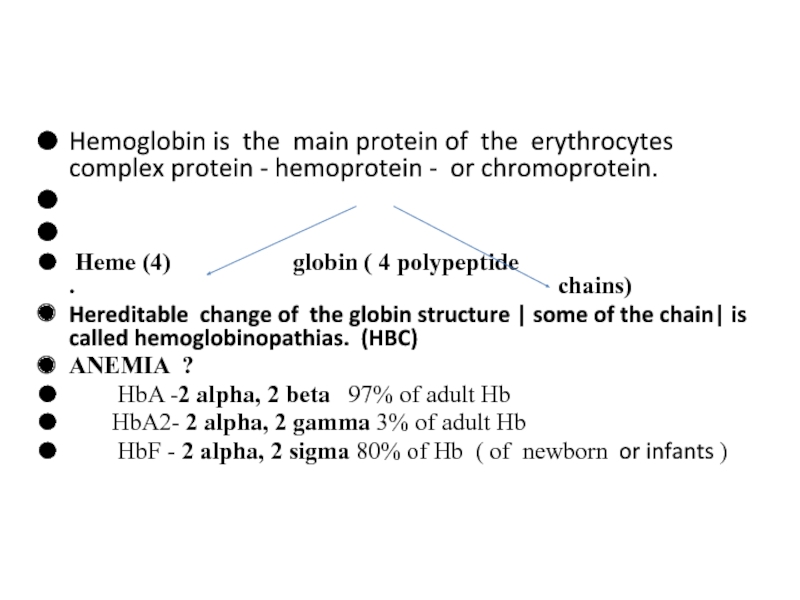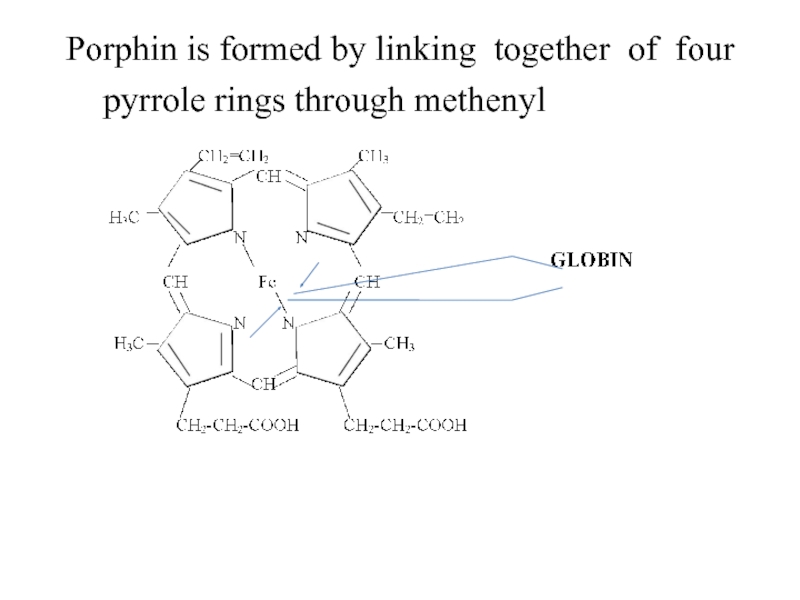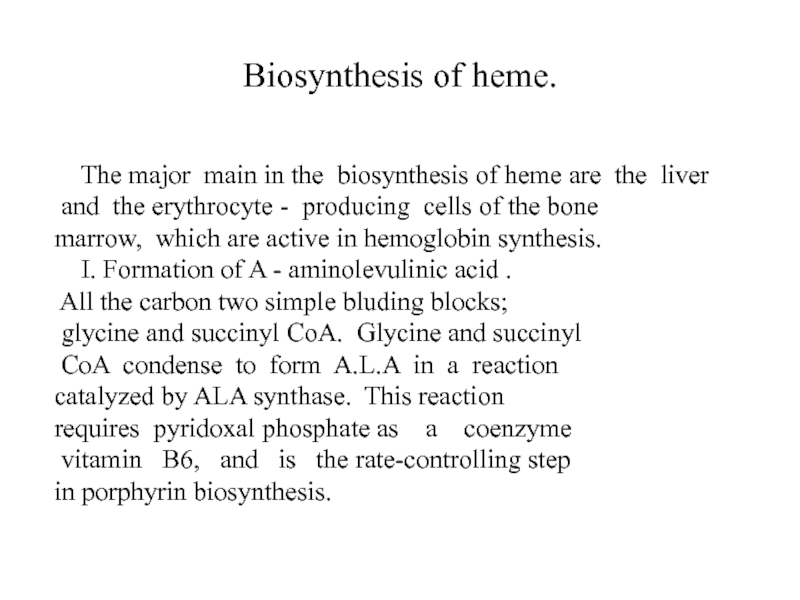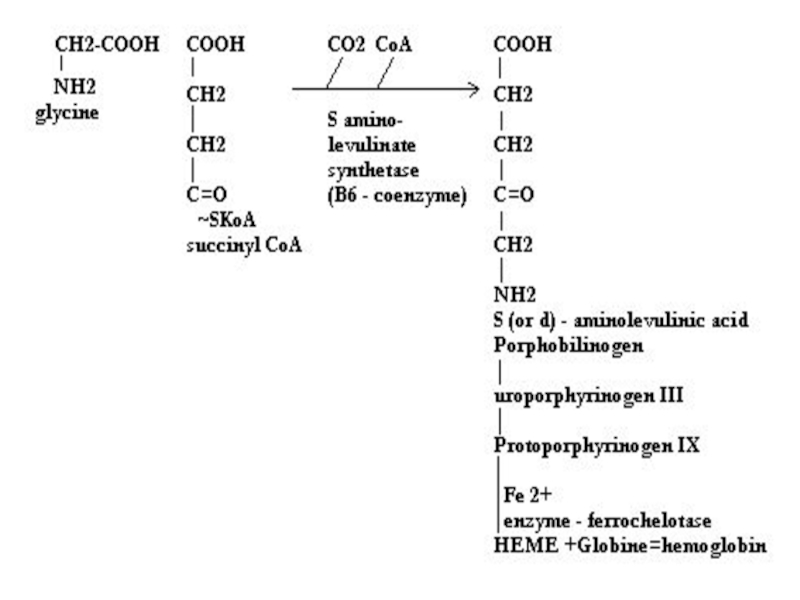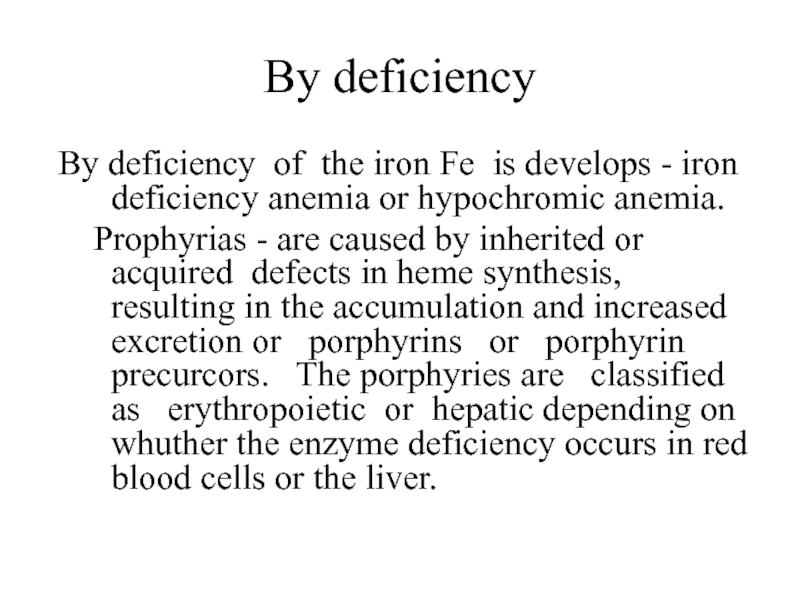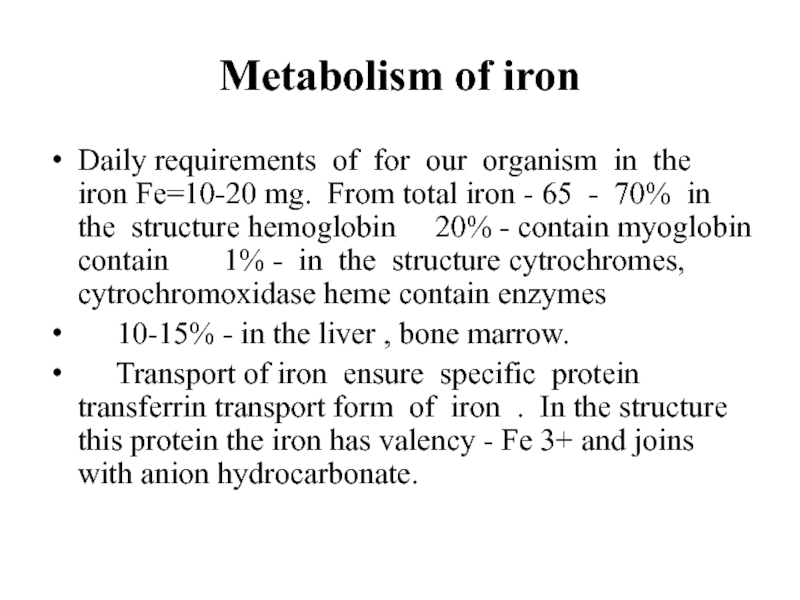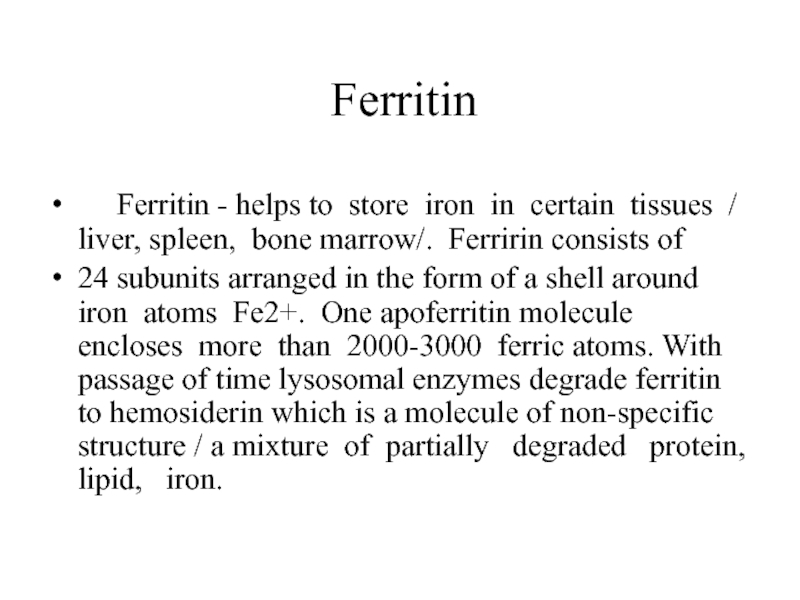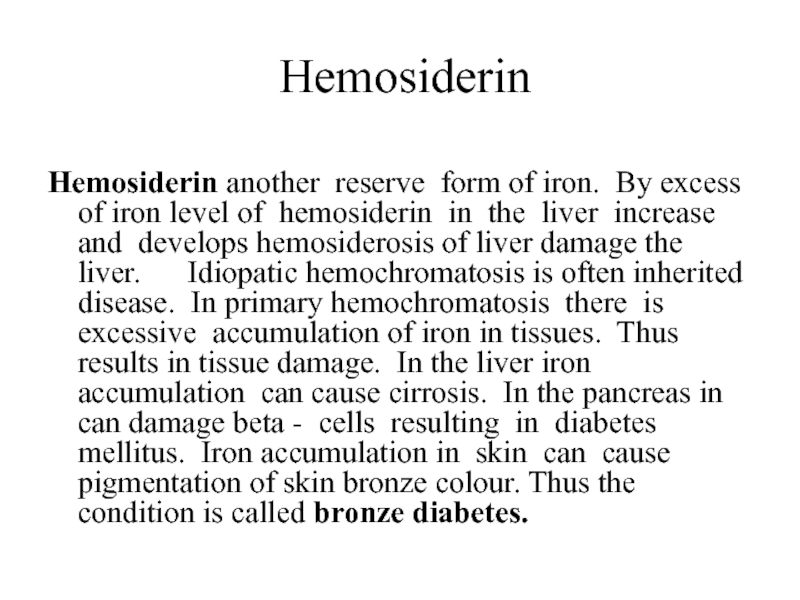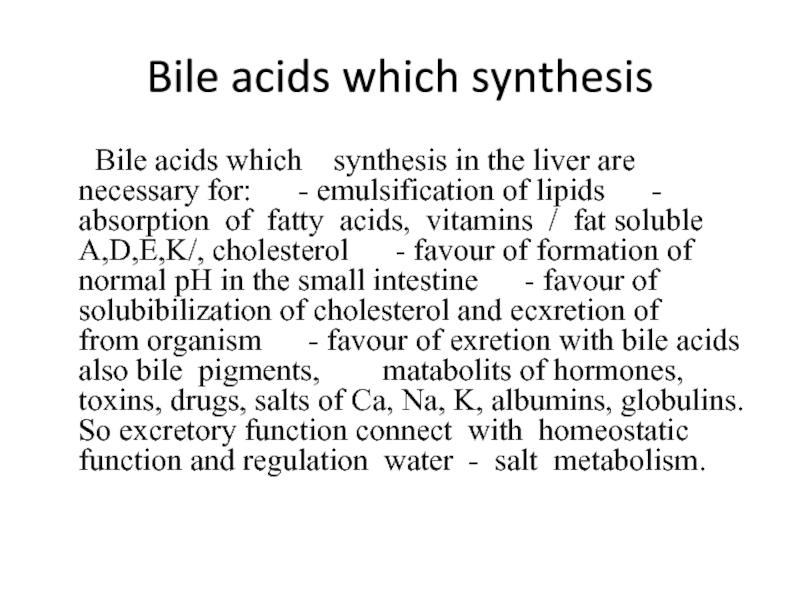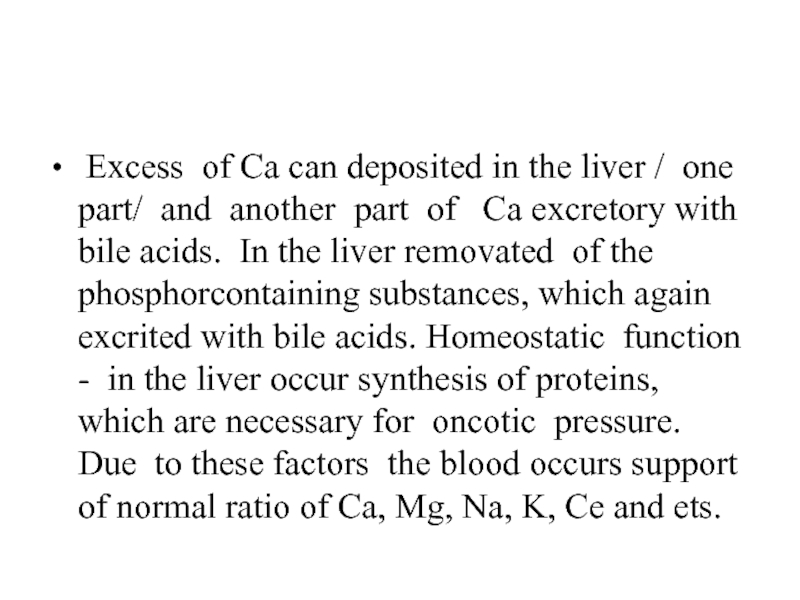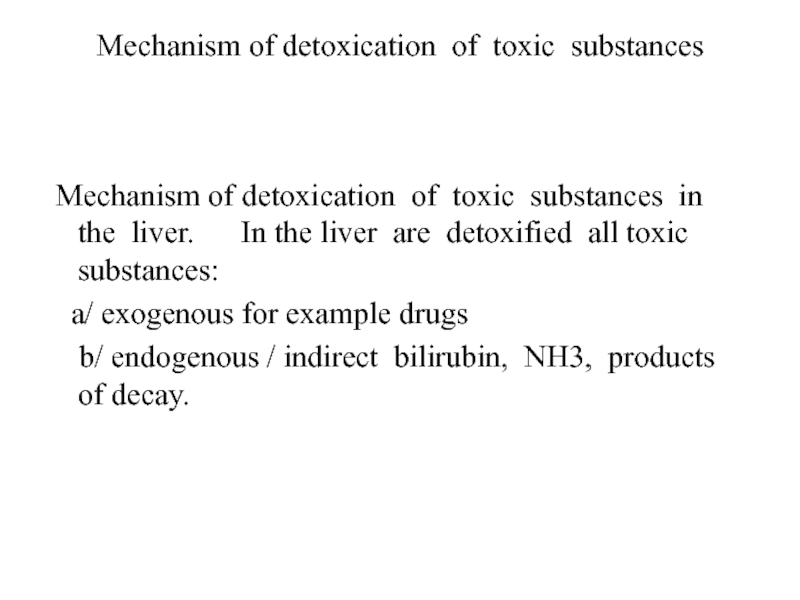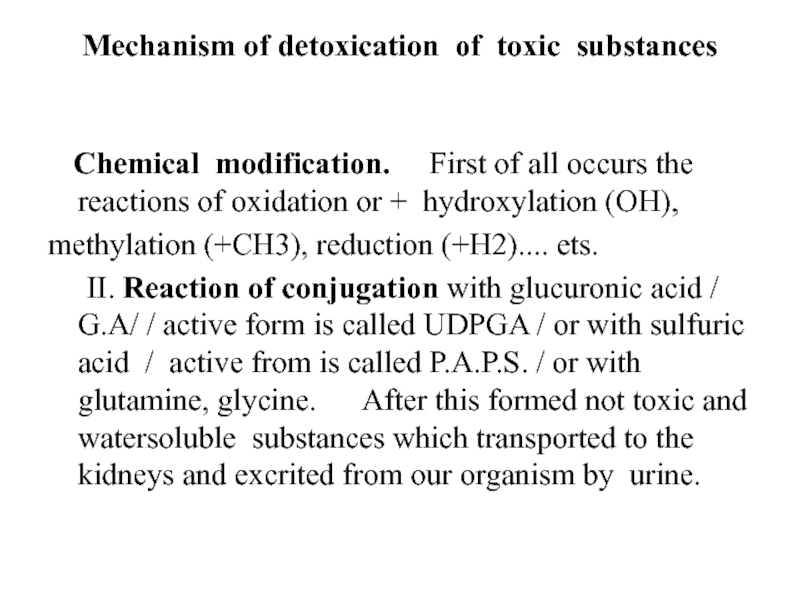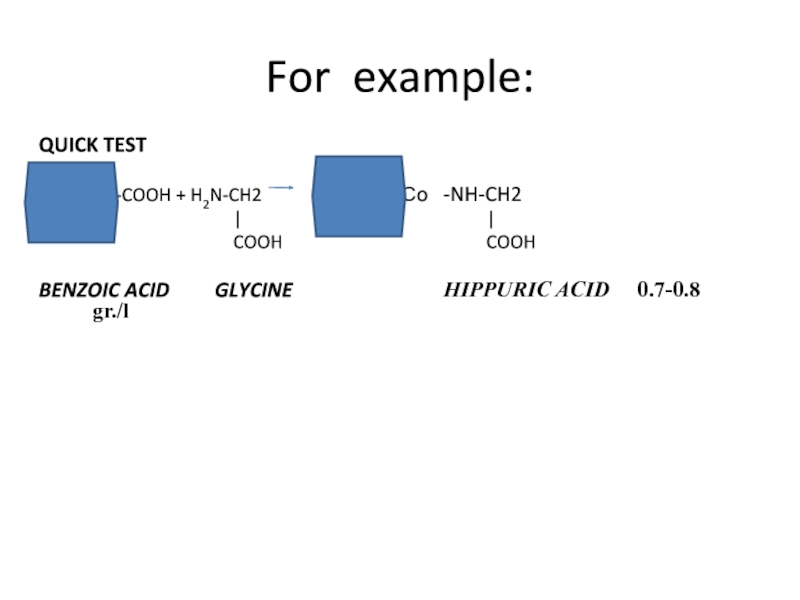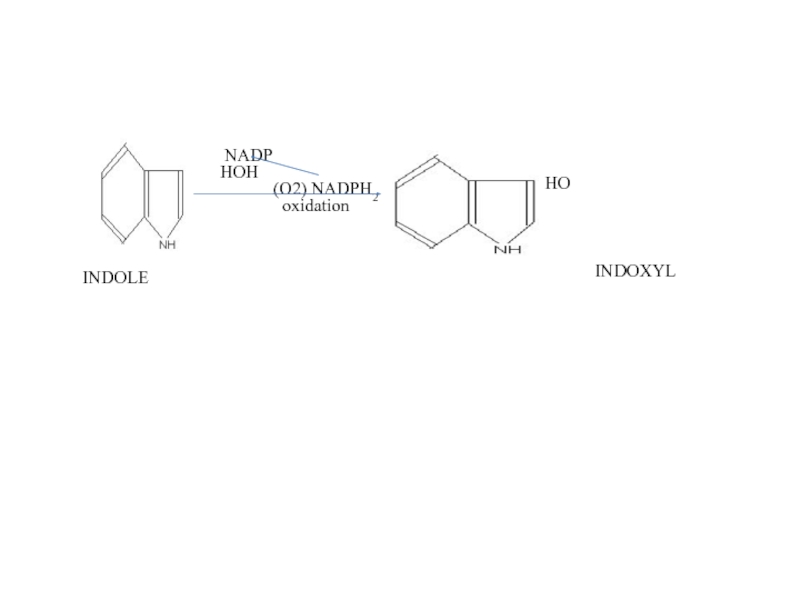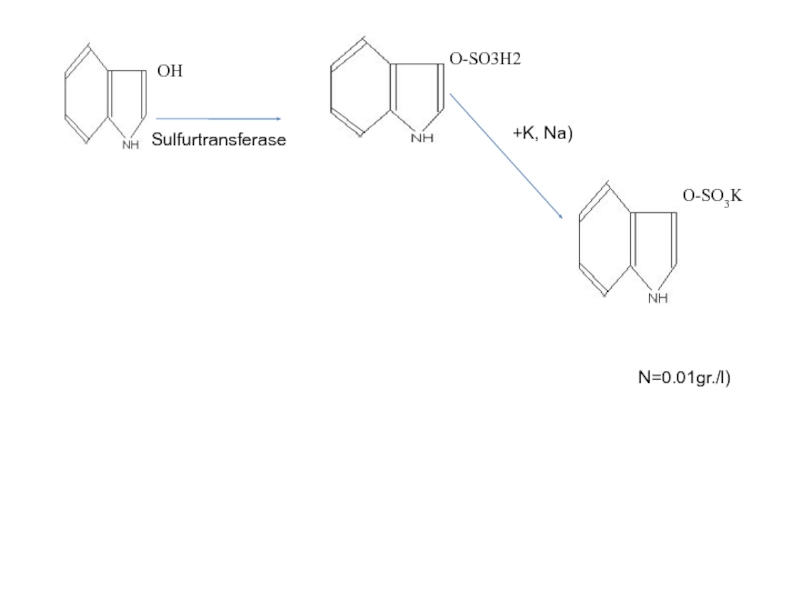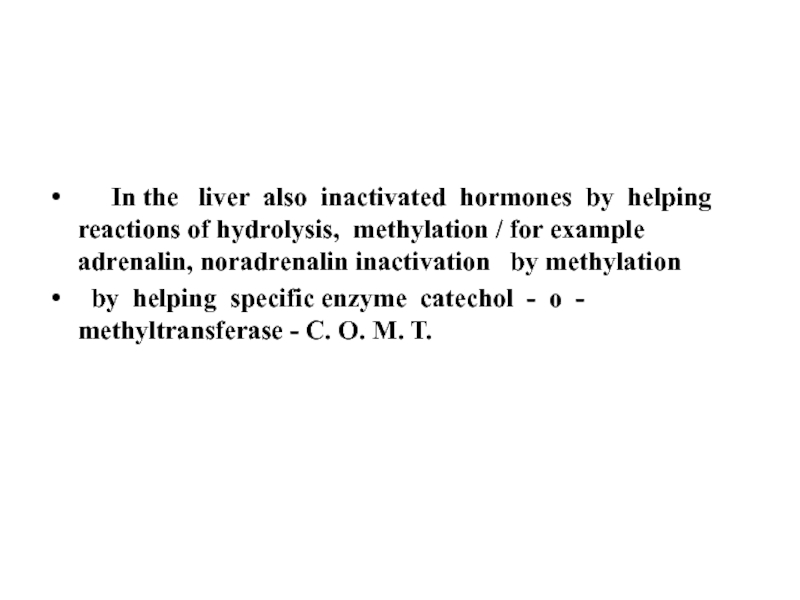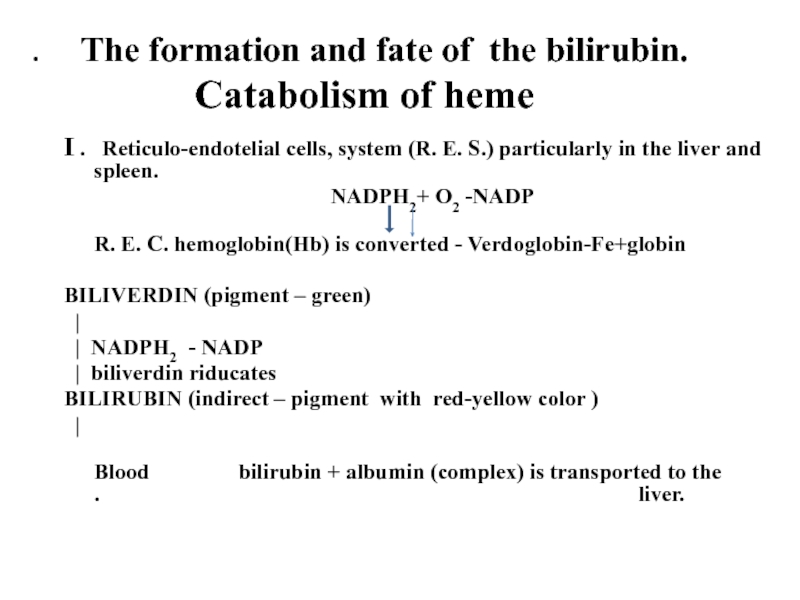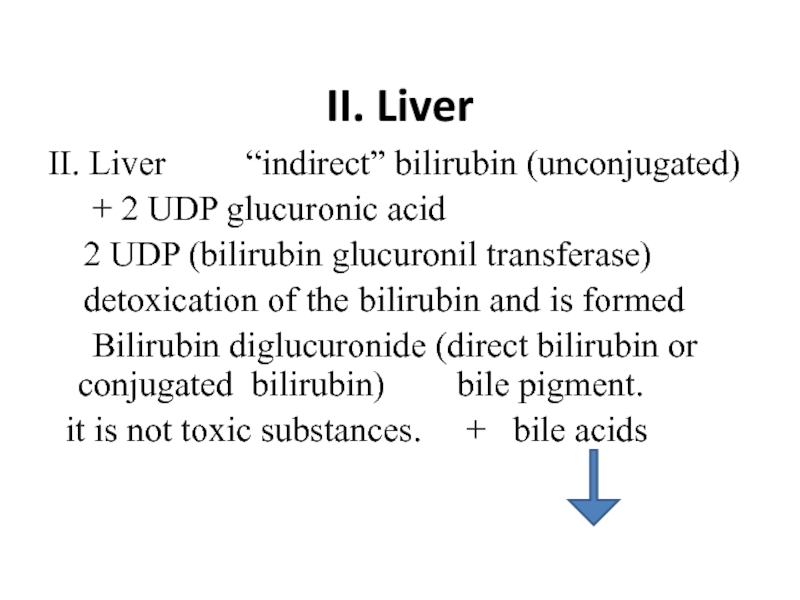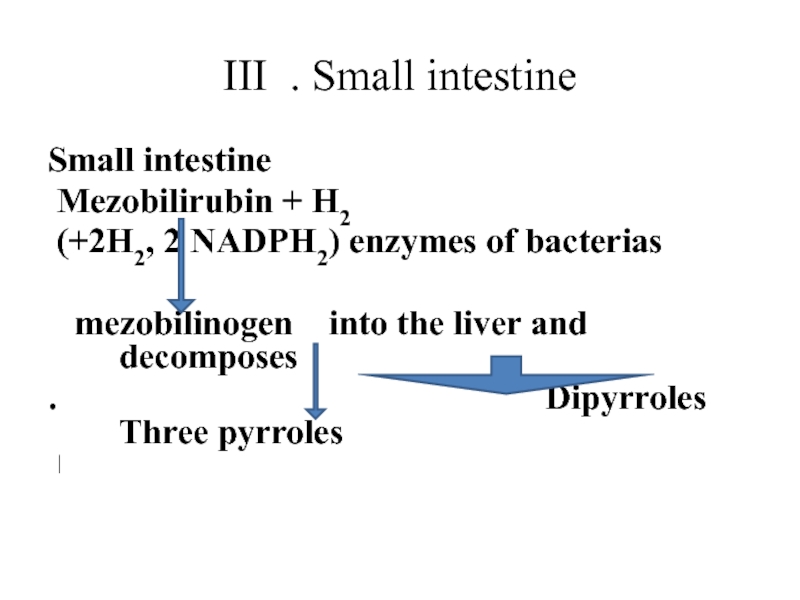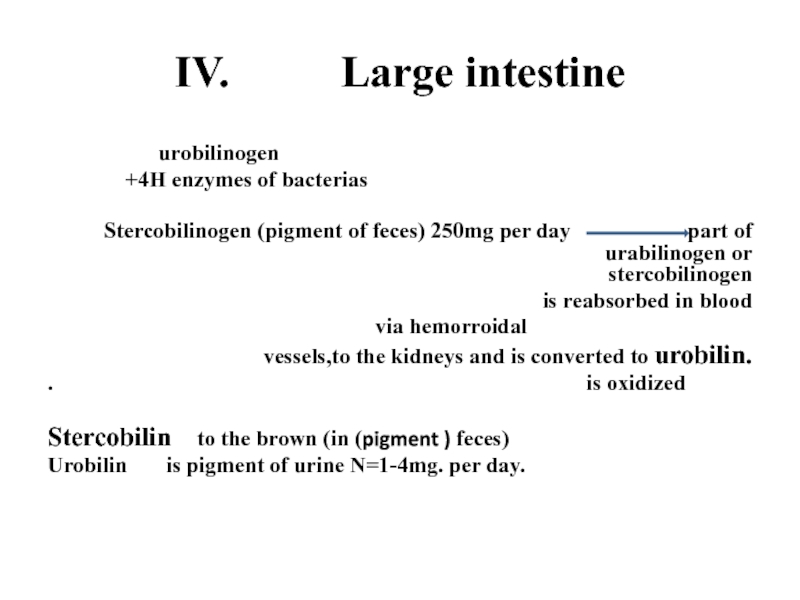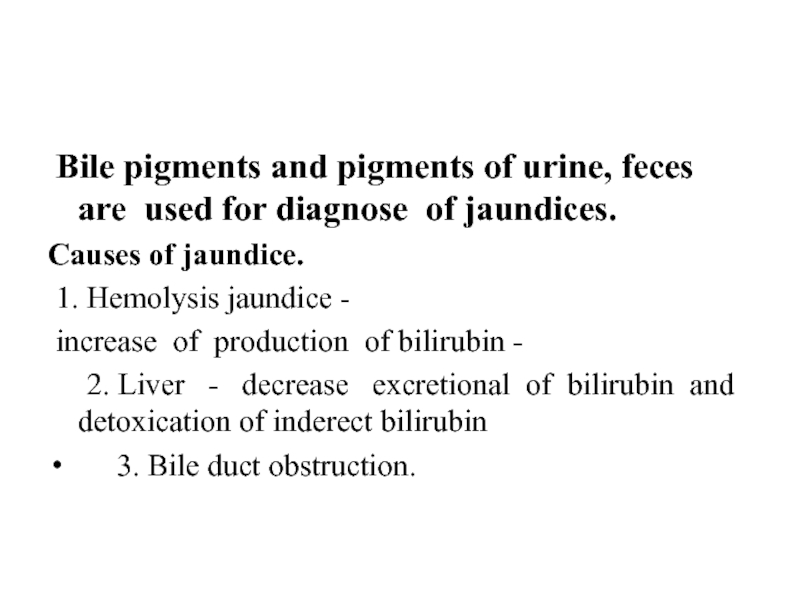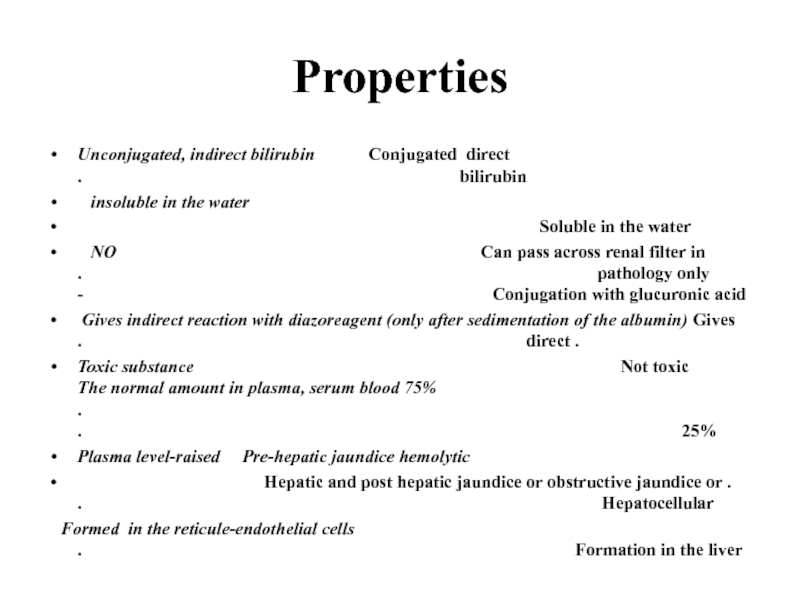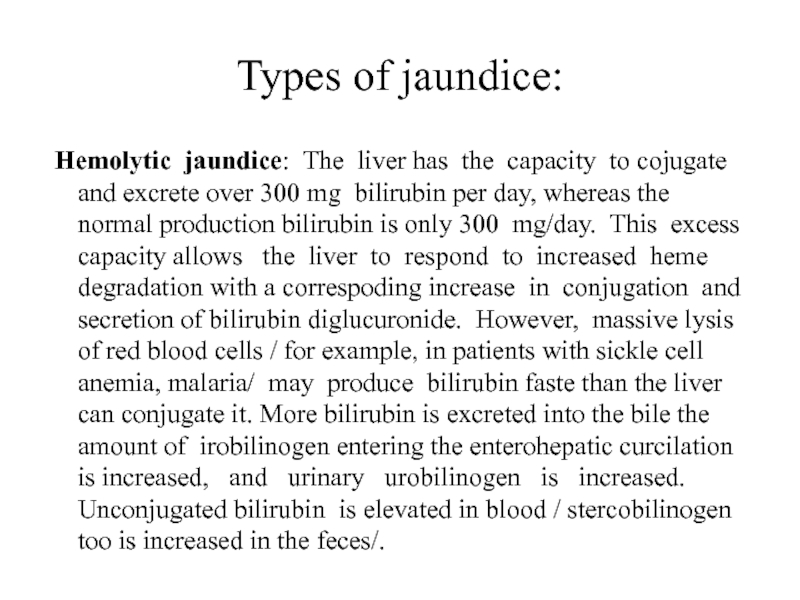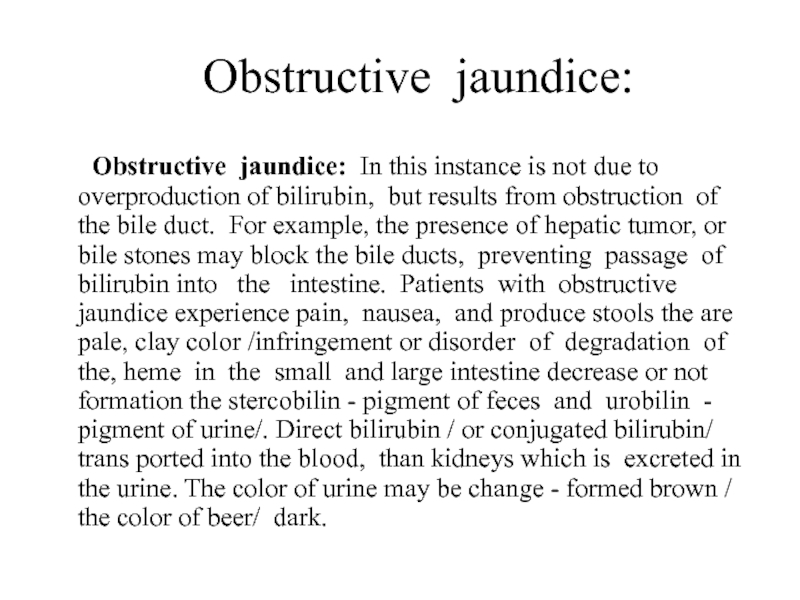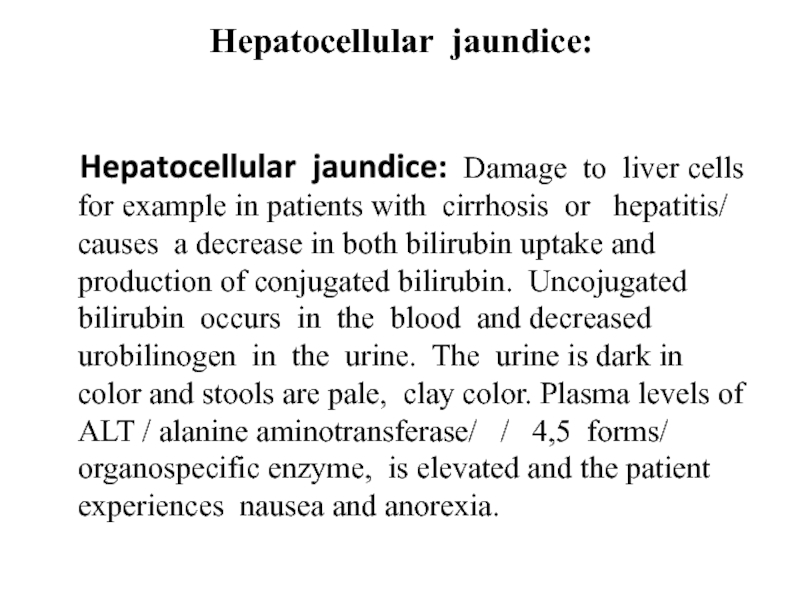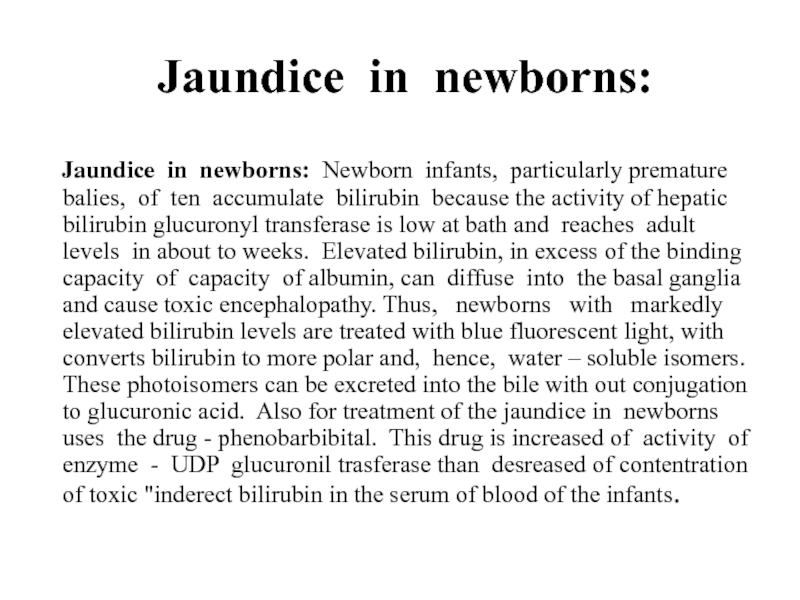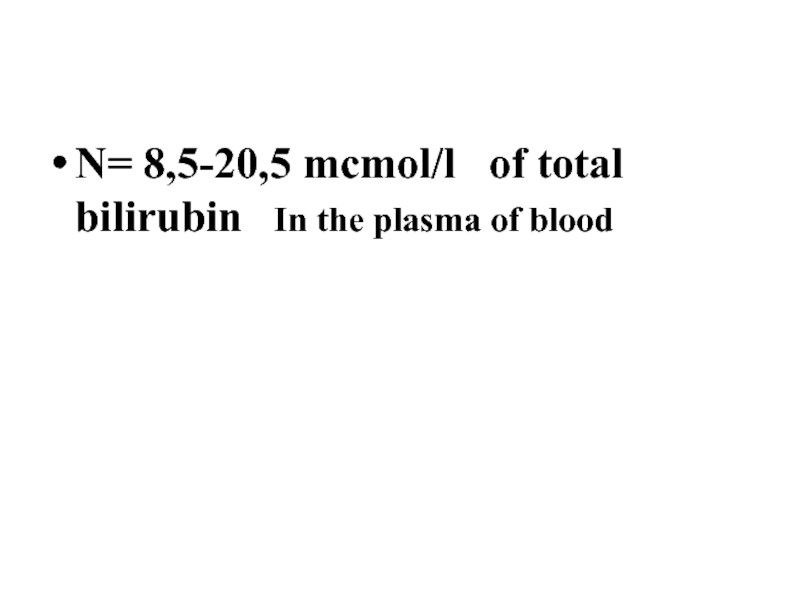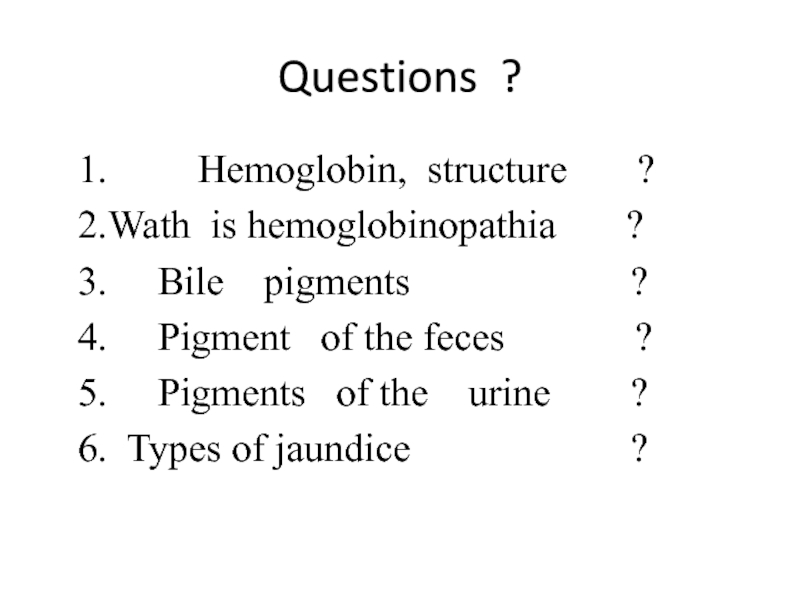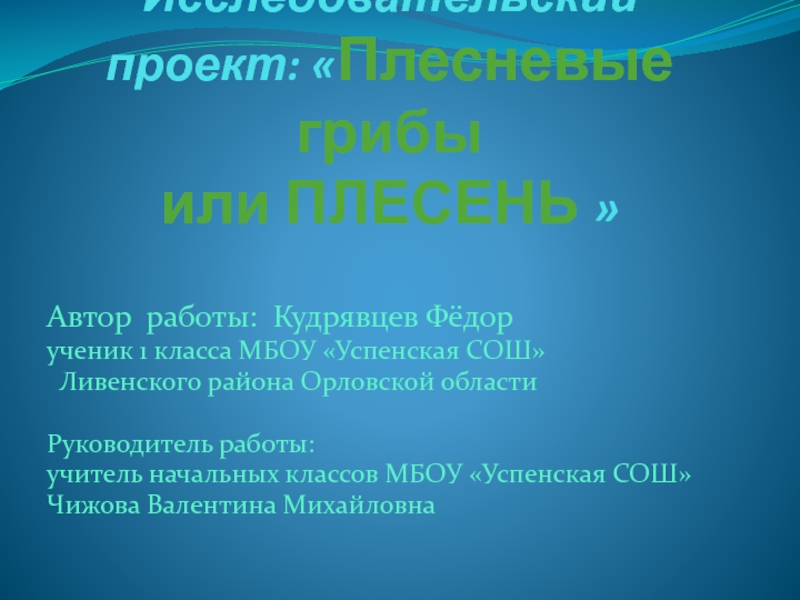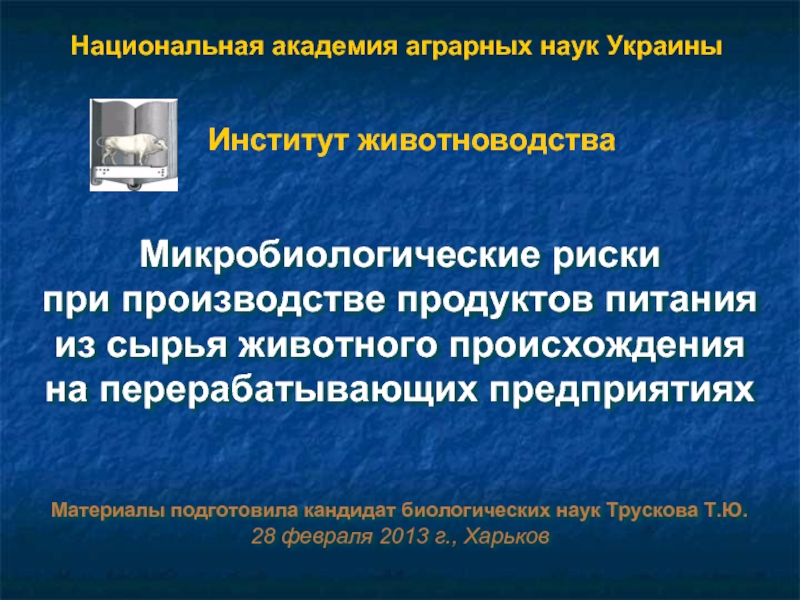- Главная
- Разное
- Дизайн
- Бизнес и предпринимательство
- Аналитика
- Образование
- Развлечения
- Красота и здоровье
- Финансы
- Государство
- Путешествия
- Спорт
- Недвижимость
- Армия
- Графика
- Культурология
- Еда и кулинария
- Лингвистика
- Английский язык
- Астрономия
- Алгебра
- Биология
- География
- Детские презентации
- Информатика
- История
- Литература
- Маркетинг
- Математика
- Медицина
- Менеджмент
- Музыка
- МХК
- Немецкий язык
- ОБЖ
- Обществознание
- Окружающий мир
- Педагогика
- Русский язык
- Технология
- Физика
- Философия
- Химия
- Шаблоны, картинки для презентаций
- Экология
- Экономика
- Юриспруденция
Metabolism of chromoproteids and biochemistry of the liver презентация
Содержание
- 1. Metabolism of chromoproteids and biochemistry of the liver
- 2. The aim: To study :
- 3. Plan of the lecture 1. Important
- 4. Chromoproteides Chromoproteides are
- 5. Important function of the liver
- 6. Hemoglobin is the main protein of the
- 7. Porphin is formed by linking together of four pyrrole rings through methenyl bridges.
- 8. Biosynthesis of heme.
- 10. By deficiency By deficiency of the iron
- 11. Metabolism of iron Daily requirements of for
- 12. Ferritin
- 13. Hemosiderin Hemosiderin another reserve form
- 14. Bile acids which synthesis
- 15. Excess of Ca can deposited
- 16. Mechanism of detoxication of toxic substances
- 17. Mechanism of detoxication of toxic substances
- 18. For example: QUICK TEST
- 19. NADP HOH
- 20. PAPS PAPS OH
- 21. In the
- 22. . The formation and fate
- 23. II. Liver II. Liver
- 24. III . Small intestine Small intestine
- 25. IV. Large intestine
- 26. Bile pigments and pigments of
- 27. Properties Unconjugated, indirect bilirubin
- 28. Types of jaundice: Hemolytic jaundice: The
- 29. B Obstructive jaundice: B. Obstructive jaundice:
- 30. Hepatocellular jaundice:
- 31. Jaundice in newborns: 2. Jaundice in
- 32. N= 8,5-20,5 mcmol/l of total bilirubin In the plasma of blood
- 33. Questions ? 1.
- 34. THANKS FOR ATTENTION !!!
Слайд 2The aim:
To study :
Major functions of liver in
Metabolism of hemoglobin, its structure, synthesis and meaning.
Слайд 3Plan of the lecture
1. Important function of the liver
2. Chromoproteids
3. Hemoglobin structure
4. Biosynthesis of heme
5. Metabolism of iron
6. Bile acids synthesis, significance
7.Mechanism of detoxication of toxic substances
8.The formation and fate of the bilirubin.
9. Causes of jaundice.
Слайд 4Chromoproteides
Chromoproteides are complex proteins the
In our organism are present: complex proteins - include Fe2+ - cytochrome oxidase(heme), haemoglobin , mioglobin catalase, peroxidase, Cu2+ - cytochrome oxidase, Zn2+ - carbonic anhidrase, Mg2+ hexokinase, piruvate kinase, glucose - 5 phosphase and etc.
Слайд 5Important function of the liver
Alimentary function (or formation and excretion
Excretory for example, with bile acids from organism occur process of excretion of excess of cholesterol, iron.
Detoxication of toxic substances (NH3, indirect bilirubin, hormones inactivation, amines, toxic substances after decay.
Liver is regulates the water-salt metabolism.
Liver is necessary for normal metabolism of lipids, amino acids (proteins), carbohydrates.
The synthesis of important substances: creatin, ketone bodies , anginotensinogen, all proteins of blood albumin, globulin, fibrinogen, kinins-local hormone, glycogen, lipoproteins, phospholipids, heparin and so on.
In the liver occurs process of deposition of glycogen, iron.
Regulatory or homeostatic functions.
Слайд 6Hemoglobin is the main protein of the erythrocytes complex protein -
Heme (4) globin ( 4 polypeptide . chains)
Hereditable change of the globin structure | some of the chain| is called hemoglobinopathias. (HBC)
ANEMIA ?
HbA -2 alpha, 2 beta 97% of adult Hb
HbA2- 2 alpha, 2 gamma 3% of adult Hb
HbF - 2 alpha, 2 sigma 80% of Hb ( of newborn or infants )
Слайд 8Biosynthesis of heme.
The major main
and the erythrocyte - producing cells of the bone
marrow, which are active in hemoglobin synthesis.
I. Formation of A - aminolevulinic acid .
All the carbon two simple bluding blocks;
glycine and succinyl CoA. Glycine and succinyl
CoA condense to form A.L.A in a reaction
catalyzed by ALA synthase. This reaction
requires pyridoxal phosphate as a coenzyme
vitamin B6, and is the rate-controlling step
in porphyrin biosynthesis.
Слайд 10By deficiency
By deficiency of the iron Fe is develops - iron
Prophyrias - are caused by inherited or acquired defects in heme synthesis, resulting in the accumulation and increased excretion or porphyrins or porphyrin precurcors. The porphyries are classified as erythropoietic or hepatic depending on whuther the enzyme deficiency occurs in red blood cells or the liver.
Слайд 11Metabolism of iron
Daily requirements of for our organism in the iron
10-15% - in the liver , bone marrow.
Transport of iron ensure specific protein transferrin transport form of iron . In the structure this protein the iron has valency - Fe 3+ and joins with anion hydrocarbonate.
Слайд 12
Ferritin
Ferritin - helps to store iron
24 subunits arranged in the form of a shell around iron atoms Fe2+. One apoferritin molecule encloses more than 2000-3000 ferric atoms. With passage of time lysosomal enzymes degrade ferritin to hemosiderin which is a molecule of non-specific structure / a mixture of partially degraded protein, lipid, iron.
Слайд 13 Hemosiderin
Hemosiderin another reserve form of iron. By excess of iron
Слайд 14Bile acids which synthesis
Bile acids which synthesis
Слайд 15
Excess of Ca can deposited in the liver / one
Слайд 16Mechanism of detoxication of toxic substances
Mechanism of detoxication of
a/ exogenous for example drugs
b/ endogenous / indirect bilirubin, NH3, products of decay.
Слайд 17Mechanism of detoxication of toxic substances
I. Chemical modification.
methylation (+CH3), reduction (+H2).... ets.
II. Reaction of conjugation with glucuronic acid / G.A/ / active form is called UDPGA / or with sulfuric acid / active from is called P.A.P.S. / or with glutamine, glycine. After this formed not toxic and watersoluble substances which transported to the kidneys and excrited from our organism by urine.
Слайд 18For example:
QUICK TEST
| |
COOH COOH
BENZOIC ACID GLYCINE HIPPURIC ACID 0.7-0.8 gr./l
Слайд 20
PAPS PAPS
OH
Sulfurtransferase
O-SO3H2
O-SO3K
( +K, Na)
INDICAN
INDOXYLULFATE
INDOXYL
(N=0.01gr./l)
Слайд 21
In the liver also inactivated hormones by
by helping specific enzyme catechol - o - methyltransferase - C. O. M. T.
Слайд 22. The formation and fate of the bilirubin.
I . Reticulo-endotelial cells, system (R. E. S.) particularly in the liver and spleen.
NADPH2+ O2 -NADP
R. E. C. hemoglobin(Hb) is converted - Verdoglobin-Fe+globin
BILIVERDIN (pigment – green)
|
| NADPH2 - NADP
| biliverdin riducates
BILIRUBIN (indirect – pigment with red-yellow color )
|
Blood bilirubin + albumin (complex) is transported to the . liver.
Слайд 23
II. Liver
II. Liver “indirect” bilirubin (unconjugated)
2 UDP (bilirubin glucuronil transferase)
detoxication of the bilirubin and is formed
Bilirubin diglucuronide (direct bilirubin or conjugated bilirubin) bile pigment.
it is not toxic substances. + bile acids
Слайд 24III . Small intestine
Small intestine
Mezobilirubin + H2
(+2H2, 2 NADPH2)
mezobilinogen into the liver and decomposes
. Dipyrroles Three pyrroles
|
Слайд 25IV. Large intestine
+4H enzymes of bacterias
Stercobilinogen (pigment of feces) 250mg per day part of urabilinogen or stercobilinogen
is reabsorbed in blood
via hemorroidal
vessels,to the kidneys and is converted to urobilin.
. is oxidized
Stercobilin to the brown (in (pigment ) feces)
Urobilin is pigment of urine N=1-4mg. per day.
Слайд 26
Bile pigments and pigments of urine, feces are used for
Causes of jaundice.
1. Hemolysis jaundice -
increase of production of bilirubin -
2. Liver - decrease excretional of bilirubin and detoxication of inderect bilirubin
3. Bile duct obstruction.
Слайд 27Properties
Unconjugated, indirect bilirubin Conjugated direct
insoluble in the water
Soluble in the water
NO Can pass across renal filter in . pathology only - Conjugation with glucuronic acid
Gives indirect reaction with diazoreagent (only after sedimentation of the albumin) Gives . direct .
Toxic substance Not toxic The normal amount in plasma, serum blood 75% . . 25%
Plasma level-raised Pre-hepatic jaundice hemolytic
Hepatic and post hepatic jaundice or obstructive jaundice or . . Hepatocellular
Formed in the reticule-endothelial cells . Formation in the liver
Слайд 28Types of jaundice:
Hemolytic jaundice: The liver has the capacity to
Слайд 29B Obstructive jaundice:
B. Obstructive jaundice: In this instance is not
Слайд 30 Hepatocellular jaundice:
Hepatocellular jaundice: Damage to liver cells
Слайд 31 Jaundice in newborns:
2. Jaundice in newborns: Newborn infants, particularly premature
Слайд 33Questions ?
1. Hemoglobin, structure
2.Wath is hemoglobinopathia ?
3. Bile pigments ?
4. Pigment of the feces ?
5. Pigments of the urine ?
6. Types of jaundice ?
